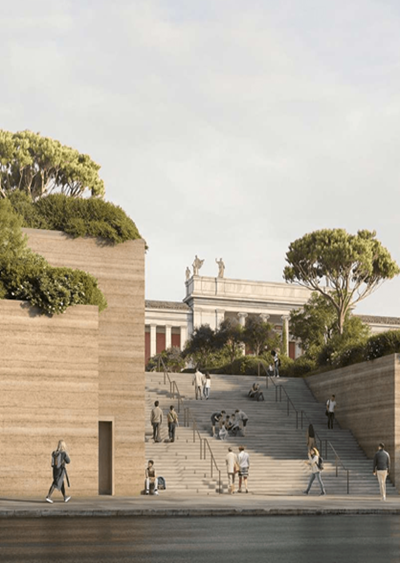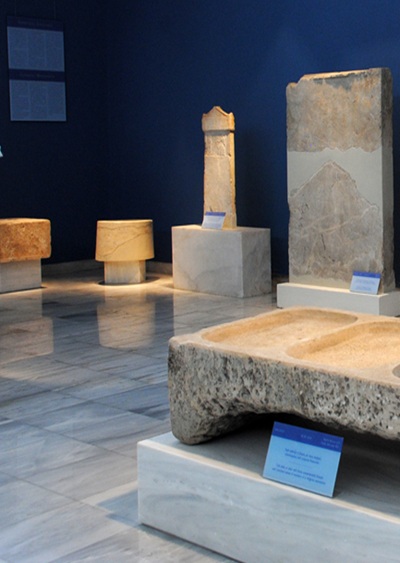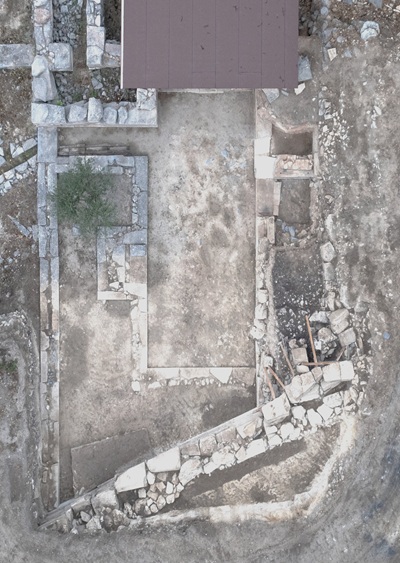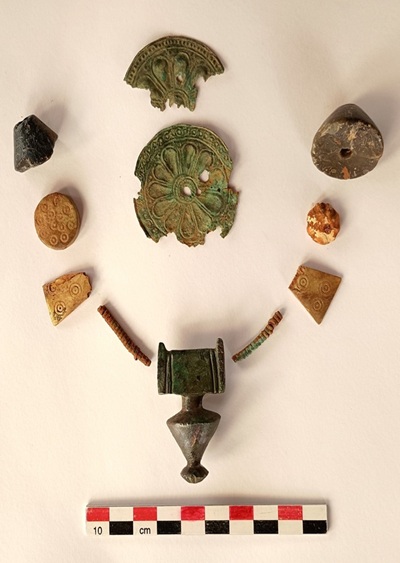
Findings mainly of archaic times were brought to light by the excavation of the central site of the ancient Temple of Demeter on the Acropolis of Falasarna. The temple was located on a rocky hill in the saddle of two high mountain peaks in a natural cave with plenty of water, but once collapsed. After the destruction of the cave, the entire Rocky Hill functioned as an outdoor sacred place of worship of a chthonic deity, related to the earth, water, fertility and in general the power of water as a source of life. This is inferred from the hundreds of clay figurines of female figures, enthroned deities, heads with a pole resembling the goddess Demeter, miniature hydrias and hydriaphore women, all characteristic finds in the sanctuaries of the ancient goddess Demeter.
The architectural structure of the church that survives today, was rebuilt with stones in second use in the late 4th / early 3rd century. E. g. on the same rock, where the cave and the earliest worship existed. The mosque is defined by an enclosure that survives for the most part, except for a part that seems to have been destroyed by a huge boulder.
A monumental scale led to two single-storey buildings with a common intermediate wall, and a common retaining wall on the north side. The eastern building was the main temple building, while the Western one probably served as an auxiliary building. A door in the eastern part of adytus led to an outdoor area, where the sacrifices were performed.
The sanctuary of the temple had a paved floor, like the rest of the temple floors. On the floor were five cases of deposition of offerings, inside of which were revealed vases of good quality with elegant shapes, some of ritual character, one of which was inscribed with engraved in the Doric dialect the name of the goddess to whom the temple was dedicated : A K E S T O I D A M A T R I , Akestoi dedicates to the goddess Demeter.
The temple was Doric style built on the natural rock with two columns, parts of which have survived. The roof was of the Corinthian type with earthen sleepers and coverings. Based on the study of the excavation data and the architectural members, it seems that the picturesque restoration of the monument will be possible, as well as the future restoration of the temple.
The rocky areas and the ancient deposits in pits excavated, revealed findings mainly of archaic times. Daedalic art seems to have dominated the Early Archaic period (650 BC.) in the form of nude female figures with a Daedalic headdress and a high pole. From the findings of the 6th century. p. Allah. objects of Egyptian and Phoenician glass, clay pendants of birds and animals, arrowheads and spears, miniature vases, enthroned female figures, as well as a female figurine holding a poppy and a pomegranate stand out. Regarding the findings of the 4th and 3rd centuries. p. Allah. the hydriskes stand out, a rhamphostomous ritual with a red-figure representation of flying love, iron spikes and alabaster vases.
The Geophysical explorations were carried out by professors C. Choka & C. Valliano with teams of the Mediterranean University of Crete. Tomographs depicted in the subsoil architectural relics, and their shape at the bottom appeared to be semicircular. However, in the upper part the picture did not clearly show the semicircular layout for the recognition of the ruins as belonging to an erstwhile Public Building, e.g. theater or bouleuterion. Only excavations will complement the picture given by geophysical prospecting and lead to its full interpretation.
The excavation was carried out under the supervision of the Ministry of Culture and sports and the support of the director of the Ephorate of Chania Dr. E. Papadopoulou, while the archaeologist of the Ephorate Dr. Michalis Milidakis and the master craftsman K. Mountakis. Archaeologists also took part in the project. Michael Benton, K. Borboudakis, Fr. Zervoudakis, and C. Apostolakis and the architects th. Nakasis and N. Michaelides. In maintenance worked E. Katsoulaki, and K. Nikolakakis. As labourers were P. Hyseni, N. Kounelakis, M. Markakis, E. Selimi, X. Musa, III. Charalampakis and E. Partali. The project was carried out with the kind sponsorships of the Aegeas Foundation amke (Thanasis and Marina Martinou), the Ministry of Merchant Marine (General Secretariat of the Aegean) with the personal interest of the Minister Mr. I. Plakiotaki and the Association of Friends of ancient Falasarna.

















Leave A Comment